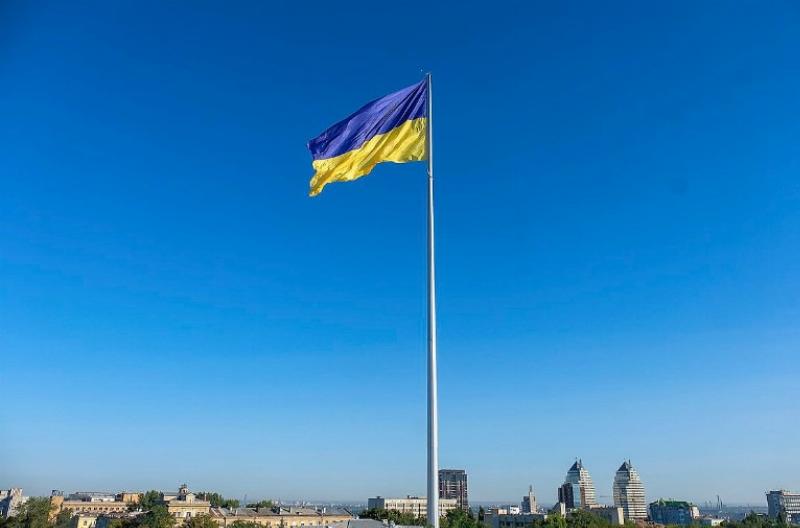


Russia’s brutal strike on August 20–21, which unleashed 574 drones and forty ballistic and cruise missiles, brought the war home to western Ukraine. The direct hit on a U.S.-owned Flex electronics factory in Mukachevo — a civilian facility employing Ukrainians and producing consumer goods — was more than an attack on Ukraine. It was an attack on American interests. The question now is unavoidable: What is our strategy in Ukraine?
The Biden administration didn’t have one that worked. It offered open-ended aid, vague assurances, and sanctions that Moscow quickly evaded. The results are plain: Putin escalated, Ukraine suffered, and American credibility eroded.
Now it falls to President Trump to define a plan. If diplomacy is to mean anything, it must be paired with teeth. Putin respects only the stick — tariffs, sanctions, and credible military deterrence — not empty promises.
Give Guarantees Teeth — Immediately
A genuine strategy starts with enforceable measures that impose consequences for every Russian strike. First, tighten the sanctions vise. Secondary sanctions must hit the tankers, insurers, and banks that enable Russia’s oil revenues. Target the brokers and middlemen who feed Moscow’s missile and drone supply chains. The goal is simple: Make every Russian missile fired more expensive to build, finance, and replace.
Second, the White House should announce an “Aid-on-Attack” trigger: Any major Russian assault on civilians or U.S.-affiliated facilities must automatically unlock shipments of air defense interceptors and counter-drone systems to Ukraine within 72 hours by prepositioning them in Europe. No ambiguity. No bureaucratic delays.
Third, harden western Ukraine — the very region Moscow just hit. This means building a “no kill gap” air defense ring anchored by Patriot and NASAMS systems stationed in NATO territory, cued by allied AWACS inside non-Ukraine airspace, and prioritized for protecting civilian and American-owned assets. Not one U.S. combat soldier need set foot inside Ukraine, but the shield must be real.
Finally, Washington must go beyond general condemnations and explicitly name and shame Russia’s deliberate targeting of U.S.-owned businesses, starting with the Flex electronics plant in Mukachevo. The administration should launch a Private-Sector Critical Asset Protection (PSCAP) initiative to safeguard American investors in Ukraine. That effort must include reinforced shelters, fire suppression systems, and redundancy in power and communications, as well as direct integration into Ukraine’s rapid-alert system. In parallel, Washington should create a war-risk insurance fund — coordinated with allied partners — to keep American firms viable despite Russian intimidation. Protecting U.S. business is not corporate charity; it is a matter of national interest, proving that attacks on American assets abroad will bring real economic and diplomatic consequences.
Build Staying Power
Short-term deterrence must evolve into a sustainable framework. That requires a bilateral U.S.-Ukraine security accord, approved by Congress, with three pillars: guaranteed resupply floors, an integrated early warning system, and automatic sanctions snap-backs tied to ceasefire violations. Pair that with NATO’s emerging guarantees, and suddenly the West’s words have weight.
Domestically, Trump should invoke the Defense Production Act to expand interceptor and counter-drone production. Deterrence depends on magazine depth. Ukraine must also receive accelerated F-16 training and suppression-enabler packages — because only a credible air force can push back Russia’s escalating barrages.
Meanwhile, Washington should lead in creating a war risk insurance facility to keep American investment alive in Ukraine despite Russian strikes. That is how you demonstrate commitment: by showing that U.S. businesses will not be driven out by intimidation.
A Durable Posture for the Long Haul
Over time, the U.S. should help Europe stand up a “SkyShield-West” consortium, pooling air defense assets to cover Ukraine’s western skies with layered protection. Alongside that shield, codify an escalation ladder in cyber and finance: targeted cyber-operations against Russia’s defense-industrial base, and automatic banking sanctions for verified civilian-targeting patterns.
The Bottom Line
Russia has made one thing clear: Weak guarantees invite more strikes. Words without enforcement are worthless. A genuine ceasefire will come only when Putin realizes that every escalation carries an immediate and painful price.
Trump has the chance to succeed where Biden failed. He must ask and answer the question: What is our strategy in Ukraine? It cannot be endless aid with no purpose, nor symbolic diplomacy that Putin mocks. The strategy must be enforceable guarantees, credible deterrence, and a sanctions hammer that gets Moscow’s attention. And let’s be clear: This does not require American combat troops in Ukraine.
It requires willpower. It requires speed. And it requires the recognition that peace is won not with empty words, but with guarantees that have teeth.
Robert Maginnis is a retired U.S. Army infantry officer and the author of twelve books, including Preparing for World War III.

Image: The Presidential Administration of Ukraine via Wikimedia Commons, CC BY 4.0.
